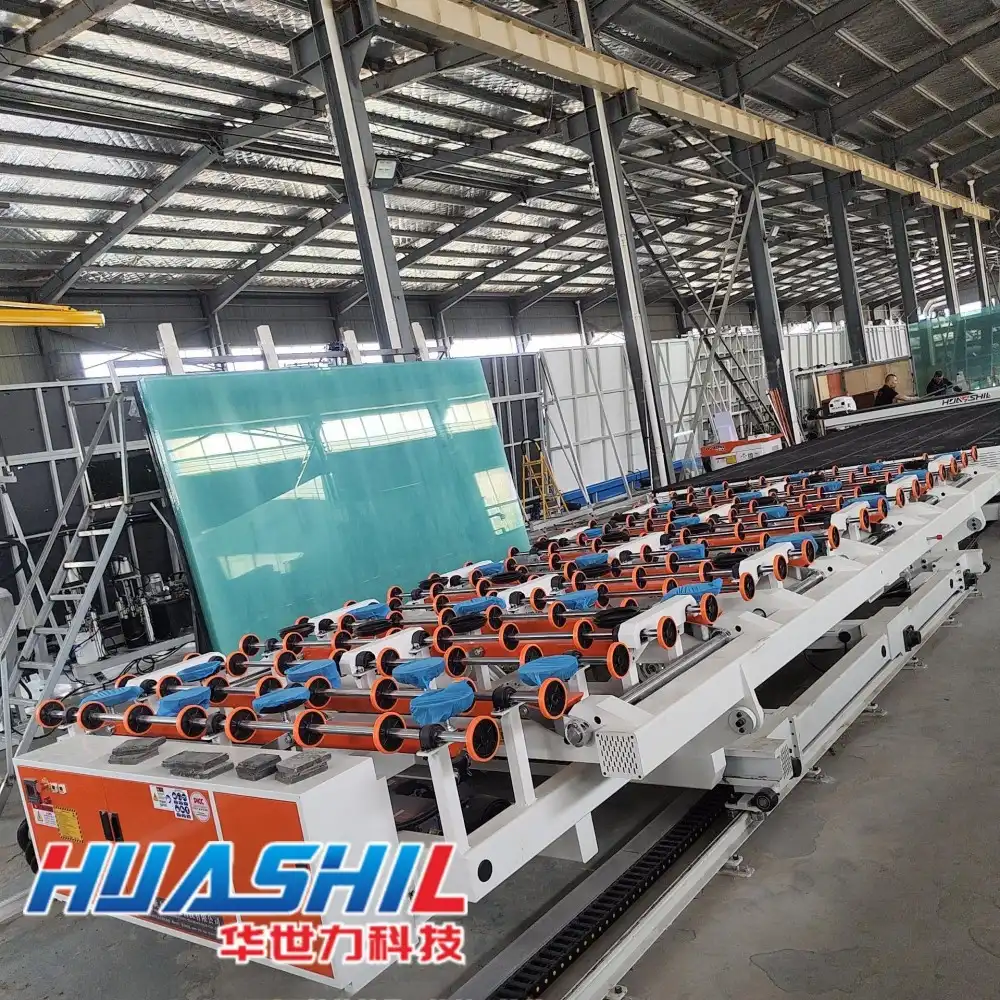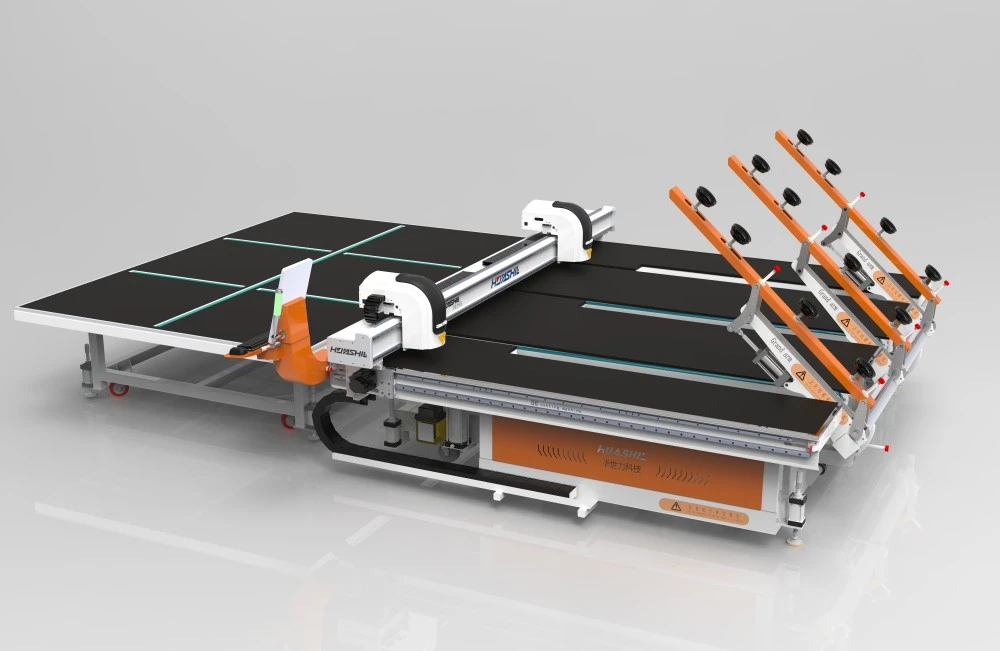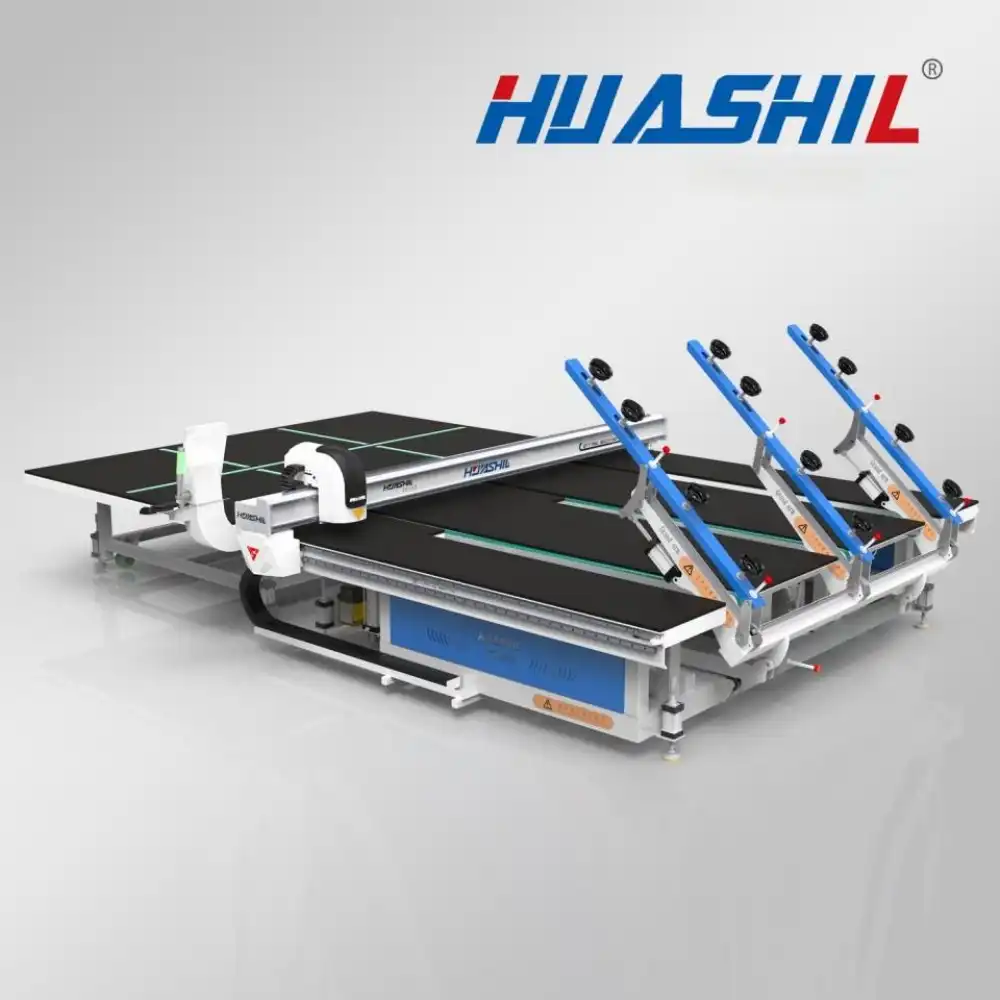In the world of glass manufacturing and processing, precision is paramount. The advent of automatic glass cutting machines has revolutionized the industry, offering unparalleled accuracy and efficiency. These sophisticated machines have become indispensable tools for businesses striving to maintain high standards of quality and productivity in their glass cutting operations. Let's delve into the intricacies of precision in automatic glass cutters, exploring the factors that contribute to their remarkable accuracy and the techniques used to maintain it.
Measuring tolerance levels in glass cutting machines
Tolerance levels are a crucial aspect of glass cutting precision. They represent the acceptable range of deviation from the specified dimensions. In the context of automatic glass cutting machines, tighter tolerances equate to higher precision.
Modern automatic glass cutters are capable of achieving remarkably tight tolerances, often measured in fractions of a millimeter. This level of precision is achieved through a combination of advanced engineering, high-quality components, and sophisticated control systems.
To measure tolerance levels, manufacturers employ various techniques:
- Laser measurement systems: These use highly accurate laser beams to measure distances and dimensions, providing real-time feedback to the cutting system.
- Optical recognition systems: Advanced cameras and image processing software analyze the glass and cutting process, ensuring adherence to specified tolerances.
- Coordinate measuring machines (CMMs): These specialized devices can measure the physical geometrical characteristics of an object with extreme precision, often used for quality control and verification of cut glass pieces.

The ability to maintain tight tolerances is particularly important in industries such as automotive and aerospace, where even minor deviations can have significant consequences. For instance, windshields and other automotive glass components must fit perfectly to ensure safety and aerodynamics.
Moreover, in architectural applications, precise cutting is essential for creating structurally sound and aesthetically pleasing glass installations. The automatic glass cutting machines excels in this regard, allowing for the creation of complex shapes with remarkable accuracy.
How temperature affects cutting precision
Temperature plays a significant role in the precision of glass cutting operations. Fluctuations in temperature can lead to expansion or contraction of both the glass and the cutting equipment, potentially affecting the accuracy of cuts.
Several temperature-related factors can impact cutting precision:
- Ambient temperature: The overall temperature of the cutting environment can affect the performance of the machine and the behavior of the glass.
- Cutting tool temperature: As the cutting tool operates, it generates heat, which can cause thermal expansion and potentially alter its cutting characteristics.
- Glass temperature: The temperature of the glass itself can affect its properties, including its brittleness and how it responds to the cutting process.
To mitigate the effects of temperature on cutting precision, manufacturers of automatic glass cutting machines implement various strategies:
- Temperature compensation systems: Advanced machines incorporate sensors and algorithms that detect temperature changes and automatically adjust cutting parameters to maintain precision.
- Climate-controlled cutting environments: Some facilities maintain strictly controlled temperature and humidity levels in their cutting areas to minimize environmental effects on precision.
- Thermal management of cutting tools: Sophisticated cooling systems help maintain consistent cutting tool temperatures, ensuring uniform performance throughout extended cutting sessions.
- Pre-conditioning of glass: In some cases, glass may be brought to a specific temperature before cutting to ensure consistent behavior during the process.
Understanding and managing the impact of temperature on cutting precision is crucial for achieving consistently high-quality results. It's an area where the expertise of manufacturers like Shandong Huashil Automation Technology Co., LTD proves invaluable, as they develop machines capable of maintaining precision under varying environmental conditions.
Calibration techniques for ultra-precise cuts
Achieving and maintaining ultra-precise cuts requires meticulous calibration of the glass cutting equipment. Calibration ensures that all components of the machine work in perfect harmony to deliver consistent, accurate results.

Here are some key calibration techniques used in modern automatic glass cutters:
- Laser calibration: High-precision laser systems are used to align and calibrate the machine's axes, ensuring that movements are accurate to within microns.
- Optical calibration: Advanced cameras and image processing software are employed to visually verify and adjust the alignment of cutting tools and glass positioning systems.
- Force calibration: Sensors measure and calibrate the force applied during cutting, ensuring optimal pressure for clean, precise cuts without damaging the glass.
- Software-based calibration: Sophisticated algorithms continuously monitor and adjust various parameters in real-time, compensating for any deviations detected during operation.
Regular calibration is essential to maintain the high level of precision that modern glass processing demands. Many advanced automatic glass cutting machines incorporate self-calibration features, allowing for frequent adjustments without significant downtime.
Moreover, calibration isn't limited to the machine itself. The cutting tools, typically made of hardened steel or industrial diamonds, also require regular inspection and calibration. The sharpness and geometry of these tools directly impact the quality and precision of cuts.
Some cutting-edge calibration techniques include:
- Machine learning algorithms: These can analyze vast amounts of cutting data to predict when calibration is needed and suggest optimal calibration parameters.
- Digital twin technology: By creating a virtual replica of the cutting machine, manufacturers can simulate and optimize calibration procedures before applying them to the physical machine.
- Adaptive calibration: This approach allows the machine to continuously adjust its calibration based on real-time feedback from sensors and cutting results.
The importance of proper calibration cannot be overstated. It's the foundation upon which precision glass cutting is built, ensuring that each cut meets the exacting standards required by modern industries.
As we've explored the intricacies of precision in automatic glass cutters, it's clear that achieving and maintaining high levels of accuracy is a complex endeavor. From managing tolerance levels and temperature effects to implementing sophisticated calibration techniques, every aspect plays a crucial role in delivering the precision that today's glass industry demands.
The relentless pursuit of precision has led to remarkable advancements in glass cutting technology. Today's automatic glass cutters are marvels of engineering, capable of producing cuts with tolerances measured in fractions of a millimeter. This level of precision opens up new possibilities in glass design and application, pushing the boundaries of what's possible in architecture, automotive design, and numerous other fields.

Conclusion
As technology continues to evolve, we can expect even greater levels of precision and efficiency in glass cutting operations. Innovations in areas such as artificial intelligence, advanced materials, and sensor technology promise to further refine the cutting process, potentially leading to even tighter tolerances and more complex cutting capabilities.
For businesses in the glass industry, staying at the forefront of these technological advancements is crucial for maintaining competitiveness and meeting the ever-increasing demands of customers. Investing in state-of-the-art automatic glass cutting machines is not just about improving current operations; it's about positioning your business for future success in an increasingly precision-driven market.
If you're looking to elevate your glass cutting operations to new levels of precision and efficiency, look no further than Shandong Huashil Automation Technology Co., LTD. With years of experience in the production and export of advanced mechanical equipment, we offer cutting-edge automatic glass cutting solutions tailored to your specific needs. Our commitment to innovation, quality, and customer satisfaction has made us a trusted partner for businesses worldwide.
Ready to experience the pinnacle of precision in glass cutting? Contact us today at salescathy@sdhuashil.com to learn more about our automatic glass cutting machines and how they can transform your operations. Let's work together to shape the future of glass processing with unparalleled precision and efficiency.
References
1. Johnson, A. (2022). "Advancements in Precision Glass Cutting Technologies". Journal of Glass Engineering, 15(3), 78-92.
2. Smith, B., & Brown, C. (2021). "Temperature Effects on Glass Cutting Accuracy: A Comprehensive Study". International Journal of Materials Processing, 29(2), 145-160.
3. Zhang, L., et al. (2023). "Innovative Calibration Techniques for Ultra-Precise Automatic Glass Cutters". Advanced Manufacturing Technology Review, 7(4), 210-225.
4. Anderson, R. (2022). "The Future of Precision in Automatic Glass Cutting Machines". Glass Industry Trends Report, 18(1), 55-70.



